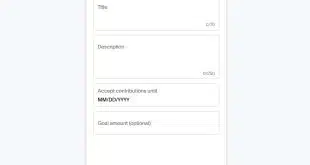Payments 3.0
Among the payments topics discussed at the huge NACHA Payments 2015 conference, held in April in New Orleans, several stood out, both for the difficulty of the problems to be solved and for the fresh thinking on the part of leaders in the payments industry.
A faster payments system was on many minds, including that of Taylor Vaughan of First Tennessee Bank. His view is that many banks are in a catching-up mode—not so much catching up with those who are trying to create a faster system, but catching up to what banks’ customers are expecting.
One tipping point is what the effect will be on point-of-sale payments when processing customer transactions on the automated clearing house network, at ACH costs, becomes the norm. A major issue all banks will face, but especially those in the midsize range, is countering the inherently greater exposure to fraud in a faster payment by designing into the bank’s systems effective ways to mitigate it.
Merchant brands aren’t necessarily waiting for the banks to lead. Some have converted their rewards cards to initiate an ACH payment at the point of checkout. As this can be done at a speed equal to or faster than other payment methods, and with risk management at least as good as the current systems, the only remaining step to ubiquity is getting a common or universal transaction-initiation scheme in place across multiple groups of different types of industries.
Barbara Bennett at the Federal Reserve Bank of San Francisco has been digging deep into the uses of cash through a large, multiyear, longitudinal diary study. Although diary studies—where a representative sample of consumers record their daily uses of cash—are the most labor-intensive kind of consumer research, they are also often the most revealing. Unlike after-the-fact surveys, diary studies capture consumer payment behavior as it happens.
Recent findings of the study presented at the conference reveal several fascinating insights, including one not always recognized by the promoters of electronic payments: Once a business has the infrastructure in place to handle the first dollar of cash, the additional per-transaction cost for handling practically any volume of cash is close to zero. This sets a challenging baseline for the competing non-cash payments systems, where there is a relatively volume-insensitive per-transaction cost. Cash remains king for low dollar-amount payments, and in many ways it sets the rubric for judging proposed competing payment methods.
Turning to one of the other major markets for banks providing payments services, Laura Lee Orcutt of Wells Fargo Bank shared with me some of her insights into the business of providing receivables services for government entities, based on her extensive work with the City of New York.
The numbers give some measure of the complexity of the task. For New York City’s government entities, $50 billion in collections occur annually across 35 agencies and multitudes of different combinations of transaction types and channels. How did Wells Fargo make it work? Although providing all the latest payment types, while keeping all the traditional ones available as well, is part of it, the key was on the social side of the equation. It involved leading an effort in organizational change at a key agency and then managing the communications to ensure that the network effect operated to its maximum in spreading the ideas throughout city government.
Having perfected how to create change in the government, the next challenge may be fully automating payments at city, state, and national parks so visitors can use their bridge-toll or freeway transponders, or their mobile phones, to pay for everything from parking to camping permits.
What do these widely spread payments use cases—ranging from faster payments at midsize financial institutions to developing new insights into the use of cash through deep research to rationalizing receivables processing across more than 30 government agencies—have in common? What I found in all of these cases was that the common thread is a banker who understands not just the payments system, but how people want to be able to use it better.
Not a bad point to start from when the goal is to do something new, do it profitably, and make both the paying and the receiving parties happy with their financial institution.
—George Warfel • george.warfel@edgardunn.com




